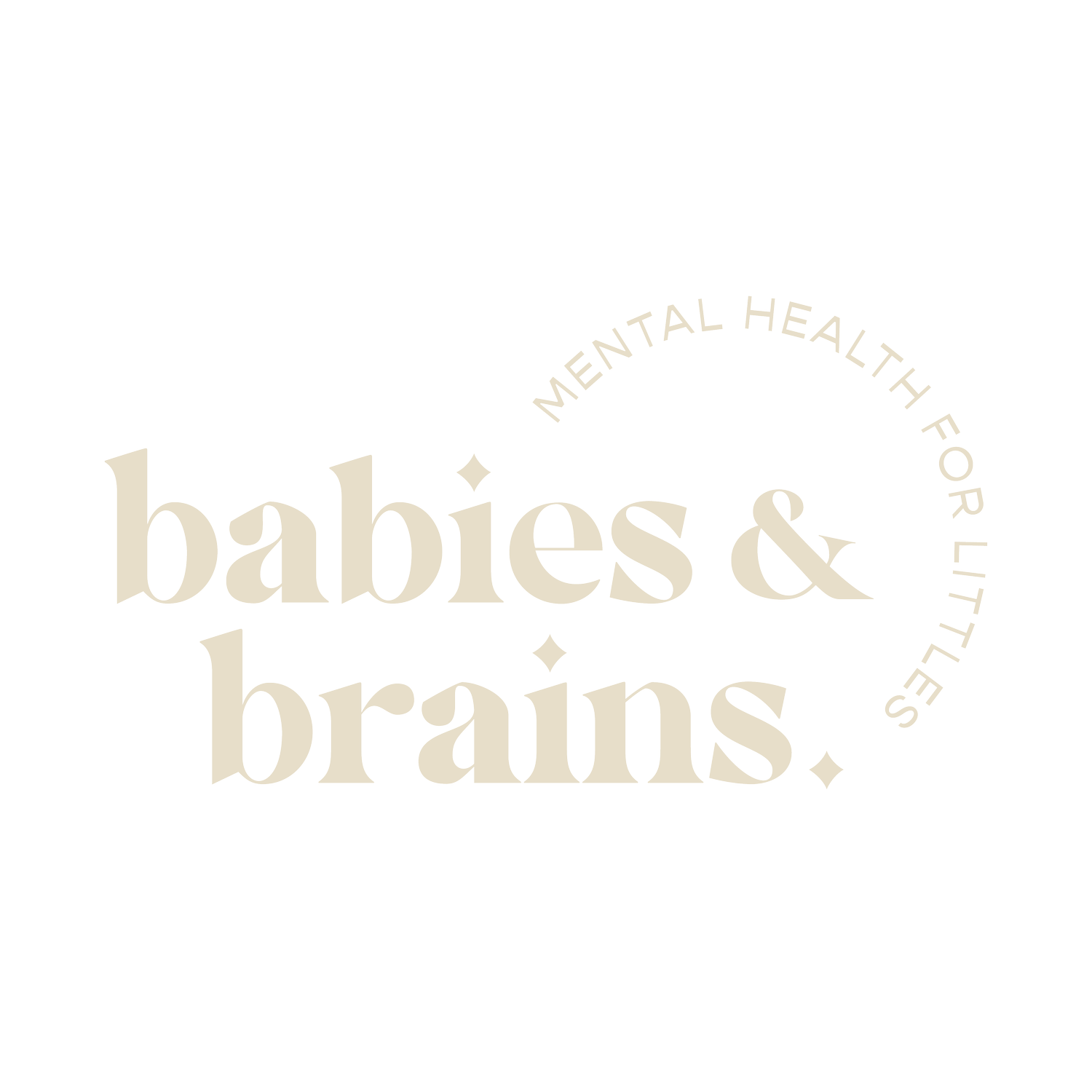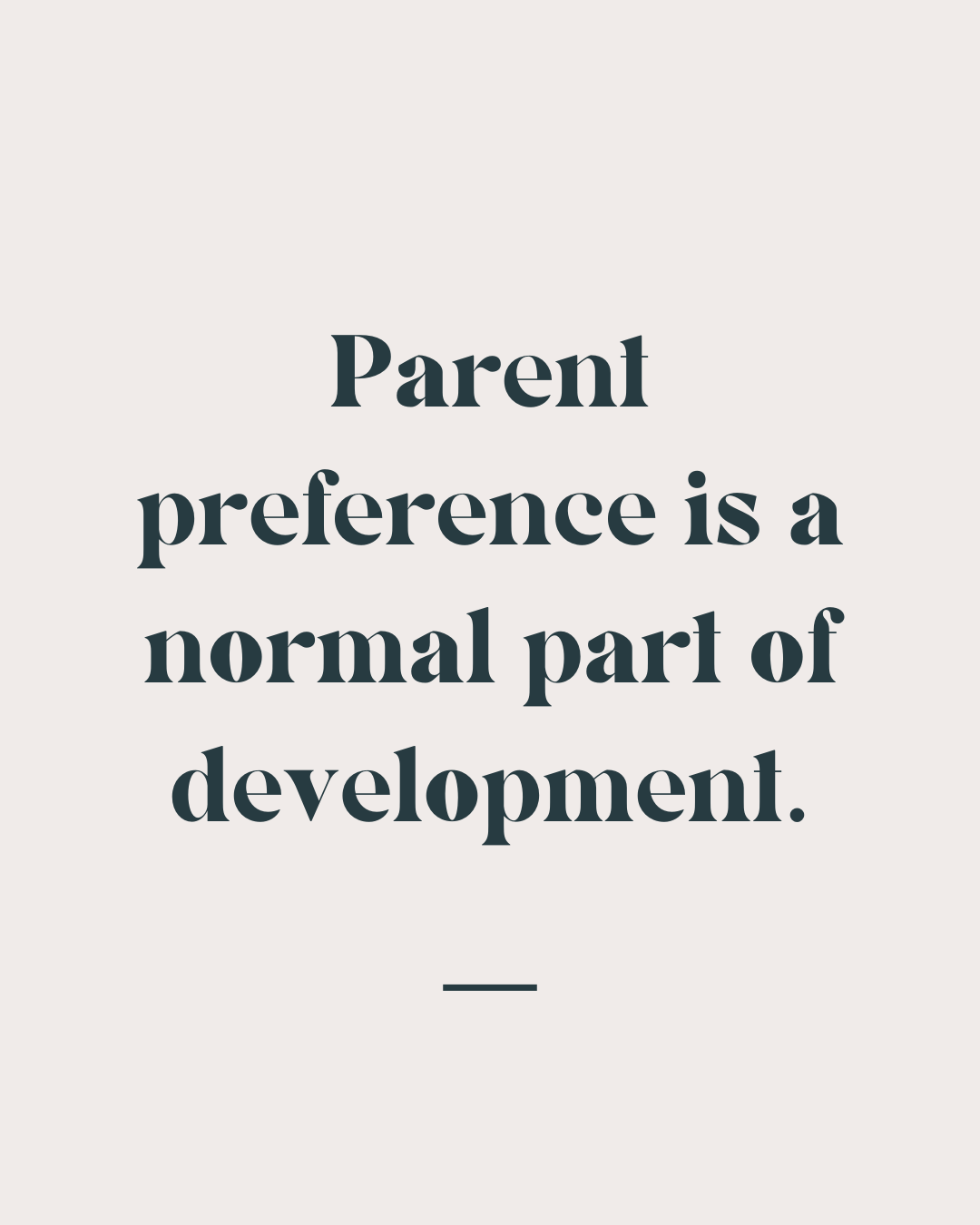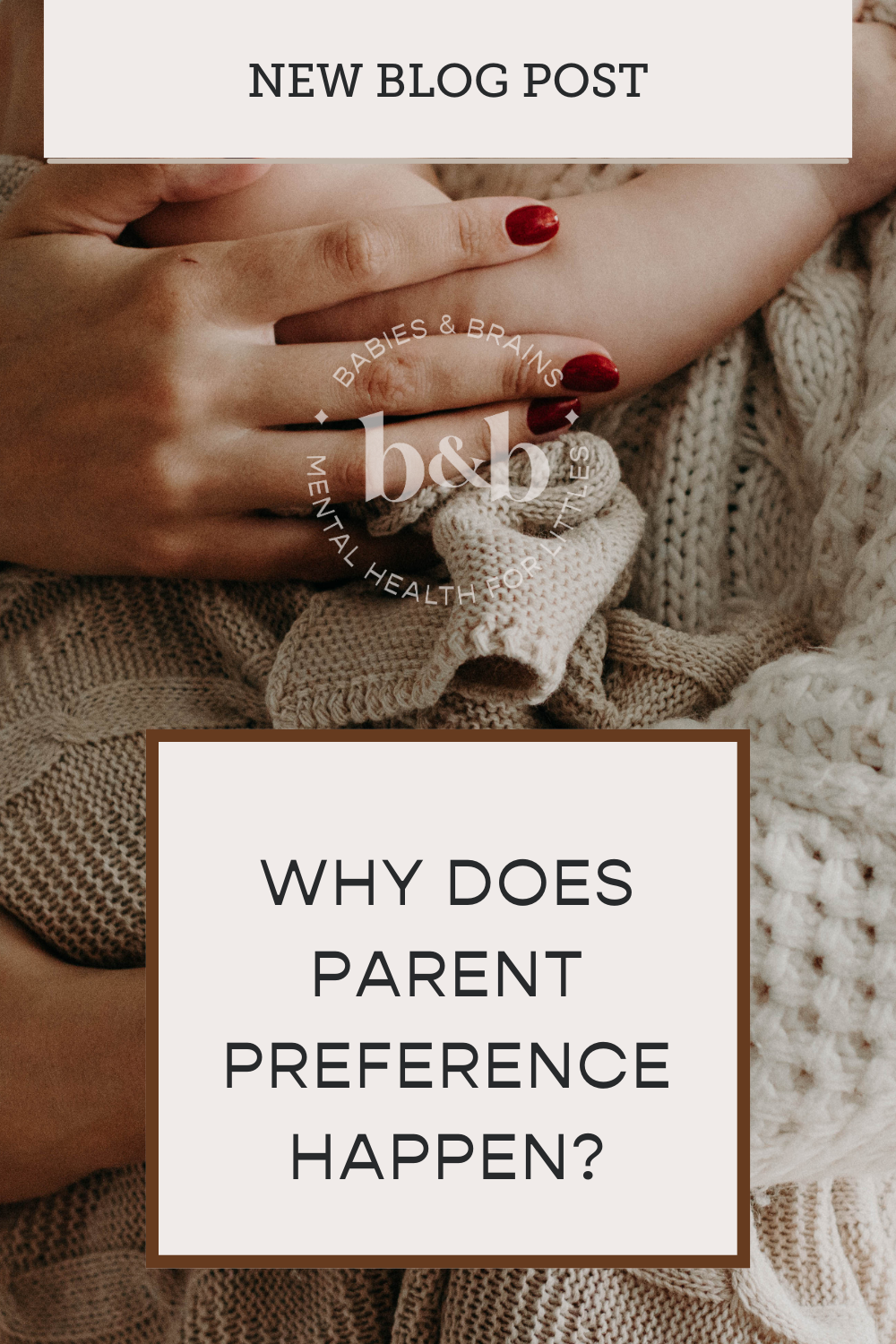Why Does Parent Preference Happen?
If you’re a parent, it’s very likely that you have experienced parent preference in your home. Parent preference occurs when a child exhibits behaviors that indicate that they favor the presence and care of one caregiver more than the other.
It’s a very normal part of child development, but it often causes parents a lot of worry. Did I do something wrong? Is my partner doing something wrong? Will this ever change?
Let’s look at some of the reasons why parent preference may happen.
Your child may be in a specific stage of attachment development.
There are specific stages in development where little ones are prompted to seek more closeness to their primary caregiver as part of attachment development. This often occurs around 7-10 months and 18 months. Toddlers also may experiment with relational dynamics and show a change in preferences, especially in certain routines. Of course, children do not fit neatly into boxes, so you may see parent preference show up in other periods of development.
There is a specific caregiver who is exclusively responsible for feeding the child.
If you are the caregiver who breastfeeds or bottle feeds your child exclusively or the majority of the time, it isn't uncommon for you to be the preferred caregiver. Food is essential to survival. Since food is provided in very close connection with a specific caregiver, closeness to that caregiver equals survival. This is why caregivers may report parent preference occurring in young infants, even before the previously discussed stages.
There is one caregiver who is home with the child more often and is responsible for most of the care routines.
If there is one caregiver in the household who is the stay-at-home parent, carrying out most of the care routines throughout the day (feeding, diaper changes, bathing, etc), it isn't surprising that the child shows a preference for this caregiver. For babies and young children, familiarity is what feels safe to them, so it makes sense that they may prefer the caregiver who spends the most time with them. This doesn't mean that they don't recognize their other caregiver, love them, nor that they don't feel safe with them, but children tend to prefer what is most familiar.
One caregiver is more attuned and responsive to the child's needs than the other.
This reason is listed last because I don't want it to be your first assumption when it comes to why parent preference is happening. Most of the time, it isn't because someone is doing anything wrong. As stated previously, parent preference is a very normal part of development. However, in some cases, it may surface because one caregiver is more warm, attuned, and responsive, and so that child feels safer with that caregiver, especially if the other caregiver has a tendency to be cold, misattuned, or even frightening to the child.
You may notice your child switch preferences throughout different stages of development, or, your child’s preference may be strong and steady throughout. This is not necessarily an indicator that anyone did anything wrong. For instance, if you were always the preferred caregiver, and then your child suddenly switches, this may just be them experimenting in their relational dynamics with their other caregiver. Or, if you have never been the preferred caregiver, this also doesn’t necessarily mean you did anything wrong.
It is important that we try not to take their behavior personally, and instead, try to follow their cues, set boundaries when needed, and support our partner (if we have one).
If you want to learn more, my Parent Preference Guide is included in my Parenting Through Attachment course which will be launching again this SPRING! Get on the waitlist here: Parenting Through Attachment.
Want to save this for reference?
Click the image to Pin it and keep your helpful parenting info in one place!



